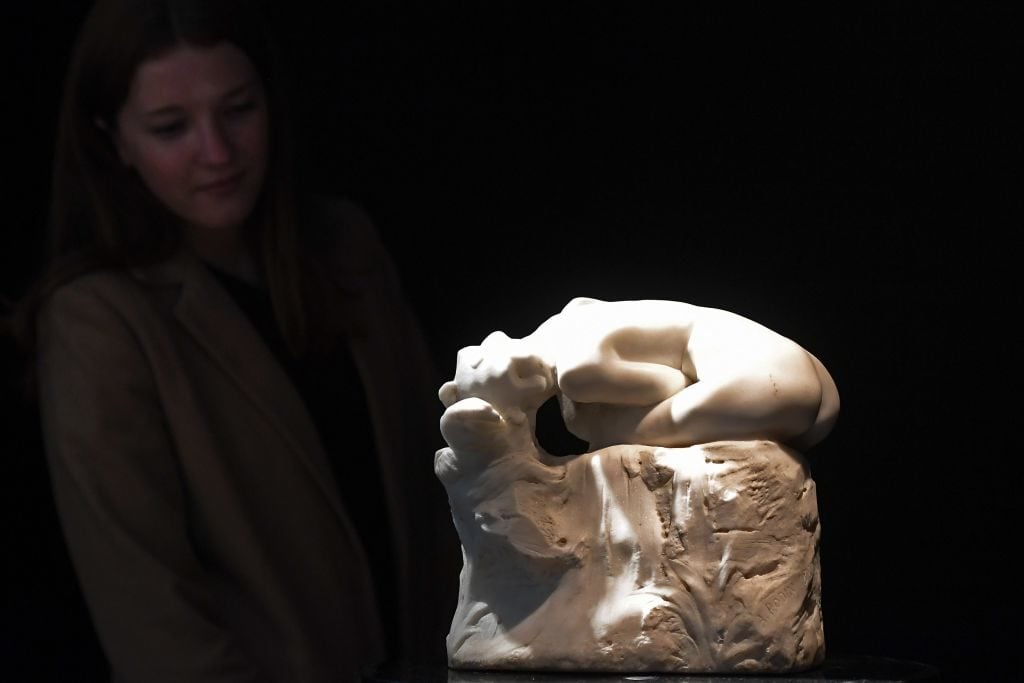Auctions
Rodin Sculpture Lost for 150 Years Could Fetch $1 Million at Paris Auction
As museums celebrate the centenary of the sculptor's death, auction houses dig up lost works.

As museums celebrate the centenary of the sculptor's death, auction houses dig up lost works.

Alyssa Buffenstein

A long-lost marble sculpture by Auguste Rodin has been tracked down in Madrid by two associate directors from Paris’ Artcurial auction house.
Androméde, depicting the figure from Greek mythology, had been kept as a family heirloom for almost 150 years, but is now being put back on the market.
The precious work is hitting the auction block at Artcurial on May 30, with a presale estimate of $880,000 to $1,320,000.
Androméde was originally commissioned in 1887 by Carlos Lynch of Morla, a Chilean diplomat who became acquainted with Rodin while living in Paris in the 1880s and 90s.
The sculpture had been passed down through generations of the same family since its original purchase in 1888.
“Rediscovering this Rodin marble 130 years after its creation is truly an event!,” Bruno Jaubert, one of the two associate directors at Artucurial who found the sculpture, is quoted in the presale catalogue.
“In the 1930, Georges Grappe, first curator of the Rodin museum mentioned the hypothesis that Androméde was doubtlessly still in the possession of the Marla family, but without any certitude. Since then, all trace of the sculpture was lost,” he explained.
2017 is a prime year for lost Rodins to pop up again: it is the 100th anniversary of the death of the artist, who is being honored by museums across the world.
“Here at the Rodin Committee, every year we discover two or three pieces, mostly from French private collections, that allow us to gain further knowledge of Rodin,” Jérôme Le Blay, founder of the Rodin Committee, told Connexion France.

Auguste Rodin, I am Beautiful (1882). A prepatory work in plaster like this one was recently rediscovered in France. Photo by Christian Baraja ©Museé Rodin, Paris.
In France, a second Rodin has in fact made its way back to the public recently, too.
A plaster preparatory work for Rodin’s I am Beautiful (1885) was found by Patrice Carrère—head of the Gestas & Carrère auction house— in a storage unit in Biarritz.
“My first thought was: ‘No it is not true, it is not possible!’,” Carrère said when he first saw the plaster work, he told Connexion France. “The plaster has traces of the master’s fingerprints and nails.”
After a four-year process of authentication, experts valued it at €700,000 ($750,000).
For now, the French government has declared it a national treasure, preventing it from leaving France for the next 30 months, and the heirs of the deceased will decide whether to keep the sculpture or sell it off.